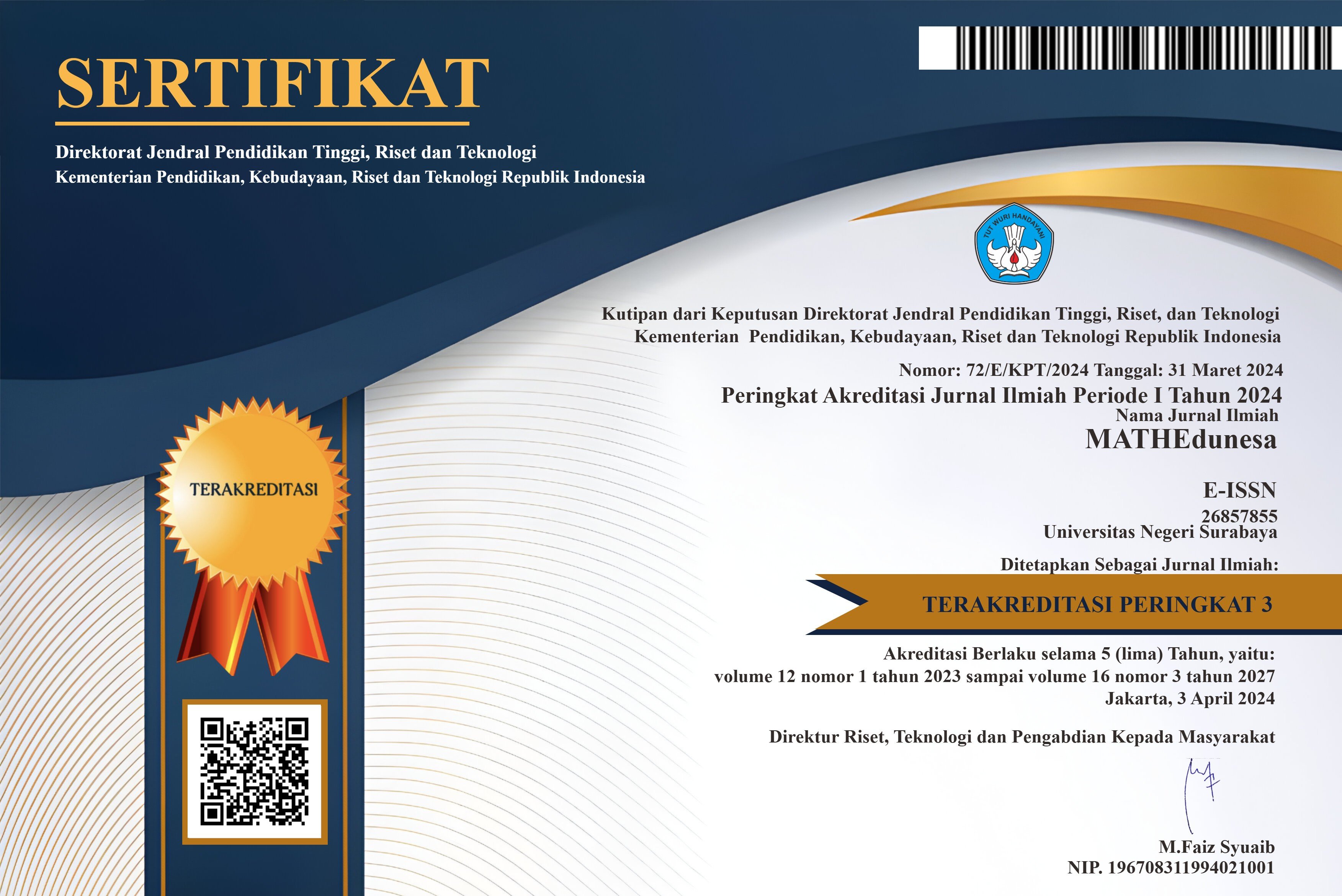Penyelesaian Soal Cerita Peserta Didik SMP Ditinjau dari Gaya Belajar
DOI:
https://doi.org/10.26740/mathedunesa.v13n1.p69-93Abstract
Solving story problems is one of the processes related to learning to solve problems. Therefore the process of solving story problems can also be said as a problem solving process. The purpose of this study is to describe solving story problems for junior high school students who have visual, auditory, and kinesthetic learning styles. This research is a descriptive study using a qualitative approach. The subjects in this study were class VIII students of SMP Negeri 1 Plumpang. The instruments used in this study were a learning style questionnaire, a math ability test, story questions, and an interview guide. The subject of this study is one student from each of the visual, auditory, and kinesthetic learning styles by equalizing mathematical abilities. Analysis of the results of the research data was carried out based on the results of filling out story questions by each subject which were adjusted to the stages of problem solving according to Polya. The results of this study indicate that at the stage of understanding the problem, student with visual and kinesthetic learning styles write down data that is known precisely and concisely but do not write down the data that is asked. Auditory learning style student write down data that is known correctly and incompletely and write down the data that is asked correctly. In the problem solving planning stage, student with visual, auditory, and kinesthetic learning styles explain the relationship between problems and experiences they have and use the same method or strategy in solving problems. The ability to solve problems must be mastered by each student in learning mathematics. At the planning implementation stage, student with visual and kinesthetic learning styles solve problems according to plan and check each step of work, while student with auditory learning styles solve problems not according to plan and are less thorough in checking each step of work. At the review stage, visual learning style student write conclusions correctly and check the results of answers, auditory and kinesthetic learning style student write conclusions inaccurately and do not check the results of answers.
Downloads
Downloads
Published
Issue
Section
 Abstract views: 129
,
Abstract views: 129
, PDF Downloads: 92
PDF Downloads: 92




